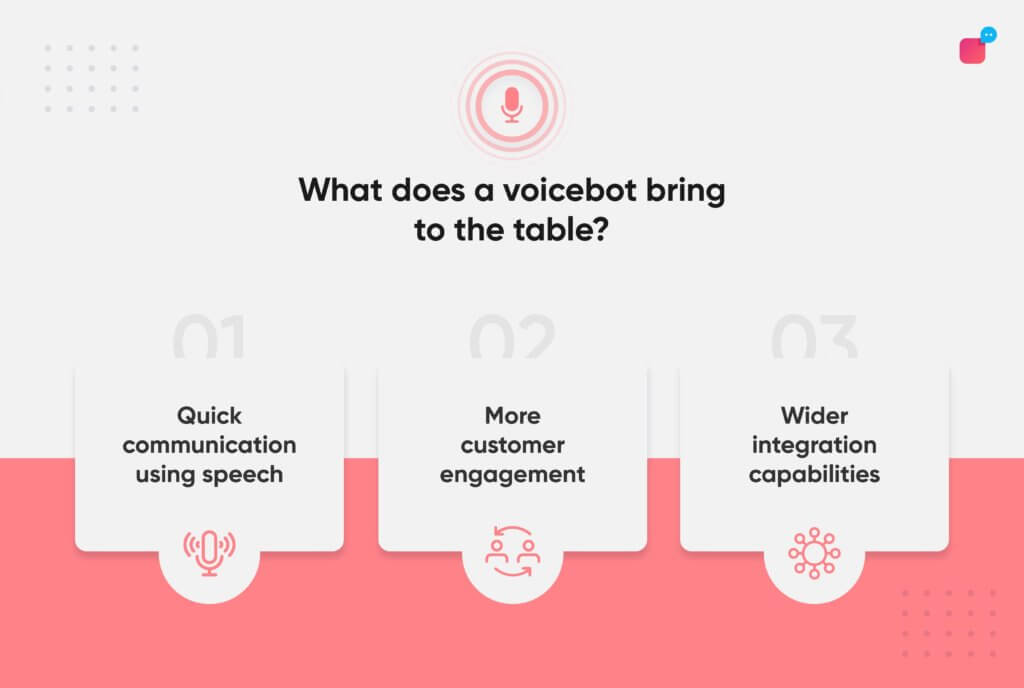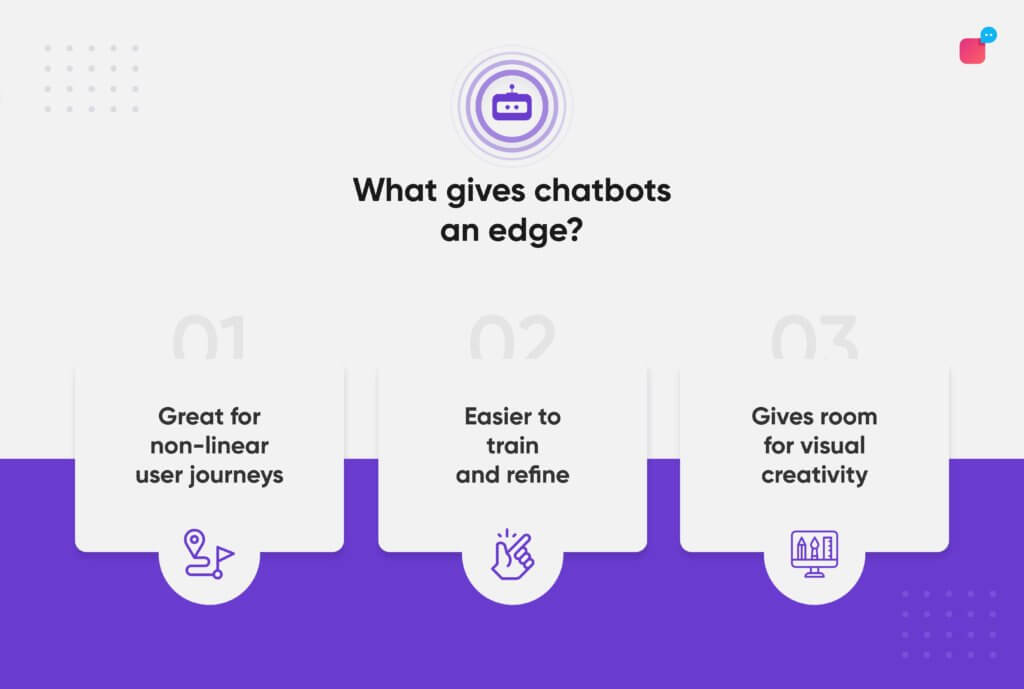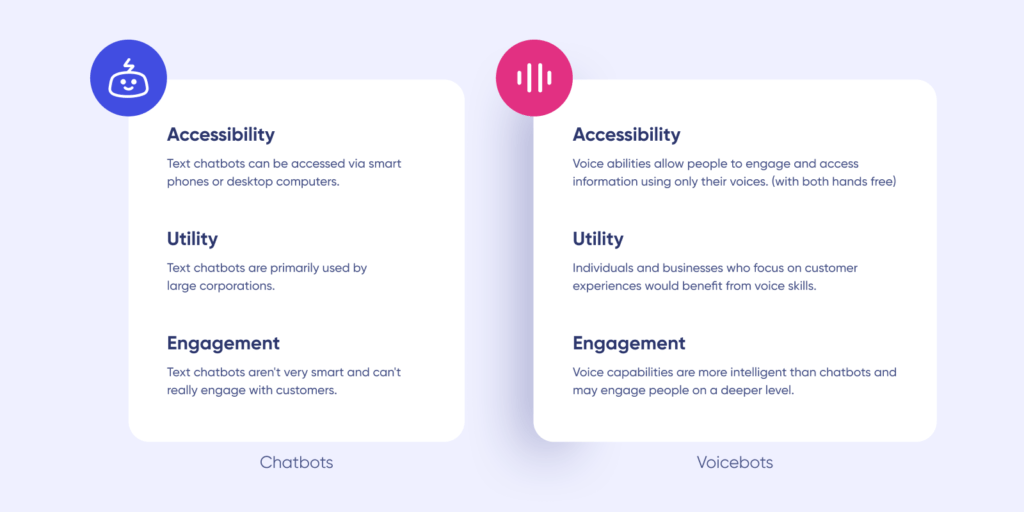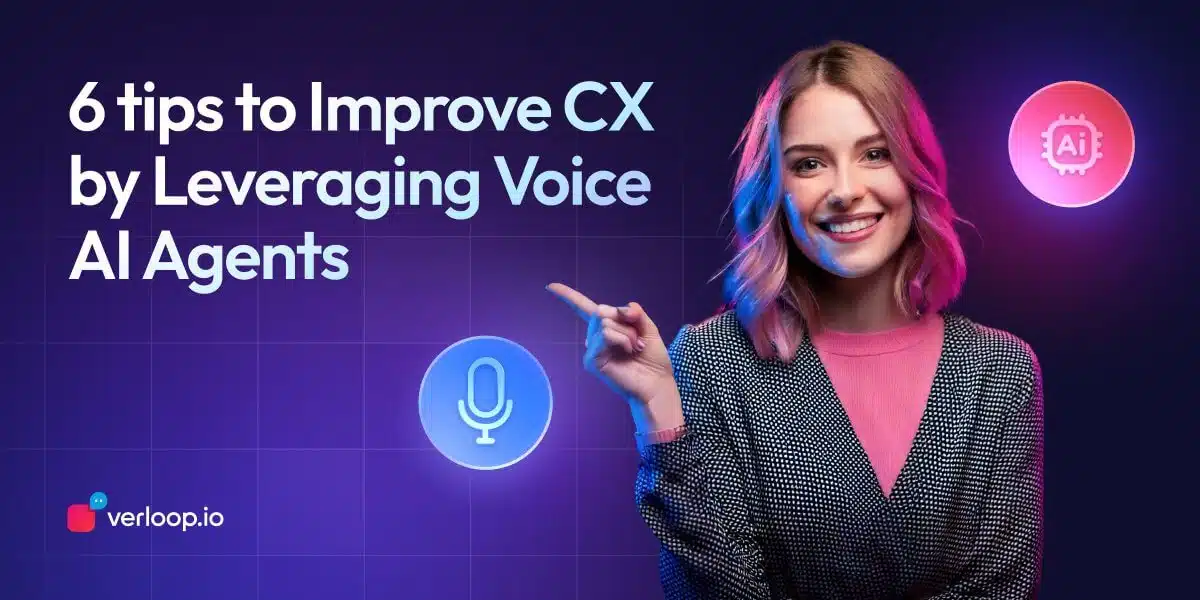
Beyond Text and Talk: Demystifying the Differences Between Voice AI and Chat AI
- February 5th, 2025 / 4 Mins read
-
Harshitha Raj
Considering using chatbots and voicebots to amplify your support process? And wondering which one suits the best for your business and your team as well? Read on!
AI in the 21st century is an integral part of the current technological advancement. In the last ten years, AI technology has been speedily developed and broadly implemented. As per Statista’s report on AI, 75% of organisations are planning to have AI-powered technologies by 2027. Isn’t it great?
Digital businesses now use AI tools such as voicebots and chatbots for the purpose of revolutionising customer interaction. They are the face of technology for users, and they resemble the ways humans talk. They bring ease of experience and feel like talking to a live person. Using natural language processing and machine learning, voicebots and chatbots are restructuring customer service dynamics in different ways.
In this blog, we’ll take a close look at how voicebots and chatbots are catalytic in conversational AI and customer communication, focusing on their benefits as well as the effects on businesses in the digital era.
What is a Voice AI Solution?
Voice AI assistant, is an AI-based technology that interacts with users through spoken language. Siri, Google Assistant, and Amazon Alexa are some of the common examples. Voicebots use Natural Language Processing (NLP) and Speech Recognition technologies to comprehend and address user queries, execute tasks, and deliver information via voice commands.

What is a Chatbot?
Conversely, Chatbot refers to an AI software application that is meant to imitate talking with humans via text-based channels like messaging apps, websites, or social media platforms. Chatbots use NLP to understand user messages, create responses, and execute predefined tasks or actions. They are used in customer service, sales and other fields.

Working of Voice AI Calls
Here’s how voice AI calls fundamentally work:
- Interaction Medium: Speak to users so they do not have to type.
- User Experience: Offer a hands-free and user-friendly experience, which is the best solution for non-typists when driving or cooking.
- Integration: Work hand-in-hand with voice-controlled devices such as smartphones, smart speakers and IoT devices.
Working of Chatbots
Here are the fundamental working principles of a Chatbot:
- Interaction Medium: Interact with users through text-based interfaces, making them write their queries.
- User Experience: Provide a text-based, multi-device and multi-platform, conversational experience.
- Integration: Integrate with messaging platforms, websites, and applications, enabling multi-channel interactions.
Head-to-head comparison
AI makes it possible to revise how we leverage chatbots and voice AI calls, both of which provide a convenient communication tool for customer support. They are super fast messengers who give the customers a boost to customer engagement and speed up response time. Let us understand some significant differences between voice AI calls and chatbots:

Interaction mode:
Voice AI calls: Conversational bots bear an innovative approach to speech and voice recognition and conversing in nature. The users communicate with voicebots via speech, and voicebots display a dialogue that resembles the ordinary course of events. This feature makes a hands-free and natural conversation experience possible.
Chatbots: Chatbots are limited by the type of text and interfaces that are built around text only. Users enter natural language queries in the form of textual messages, which the bot then analyses and sends back the appropriate answer messages.
User experience:
Voice AI calls: Voice AI calls are known to deliver an exceptional user experience via hands-free engagement and comfortable conversation flow. The voicebot interaction is highly convenient and is similarly provided by the system to human users via voice commands or natural language inquiries.
Chatbots: Unlike everyday 1-to-1 telephone-based support caller interaction, chatbots offer an experience that is through visual cues and active typing. While chatbots do not have the hands-free capability of voicebots, they still surpass their limitation by the visual interface.
Capabilities:
Voice AI calls: Voice AI calls usually perform tasks like information retrieval, making a booking, and executing commands given in voice. Expressing spoken language is the first step for machines to complete the procedures efficiently, where they need to get verbal input.
Chatbots: Chatbots can resolve inquiries related to even very detailed matters, can be manipulated to select and pass along complex information, and can be utilised to control staged processes involving many steps by enabling text-based conversing.
Technology:
Voice AI calls: Voice AI calls use speech recognition and NLP technologies, which work together to recognise and interpret the language in the spoken form with a high degree of accuracy. Here is such a technology that is capable of processing and retaining voice input with maximum accuracy.
Chatbots: Chatbots also have comparable technological infrastructure that includes terms like keyword analysis, pattern recognition, and NLP to comprehend and respond to text input. Chatbots can process written data that they use to understand user queries and reply to them individually directly.
Use cases:
Voice AI calls: Voice AI calls are ideally suited for tasks like the development of smart homes, voice assistants, hands-free cars with infotainment systems, etc., where verbal communication takes the lead or is necessary. They are suitable for situations where users interact with their gadgets when they are going hand-free and need information immediately.
Chatbots: Chatbots cover numerous cases, from website customer support to online shopping assistance to researching FAQs and automated marketing communities. They provide practical and convenient support in scenarios where information is conveyed orally and users have different preferences.
Choosing the right option
Both Voice AI calls and chatbots are significant in building a solid customer base. But which one should you go for? Selecting between voicebots and chatbots requires careful consideration of many factors in order to guarantee the best possible user experience, practical job completion, inclusiveness, and cost-effectiveness.
- User Context and Preference: Consider whether users opt for voice interaction or typing depending on their context and requirements. The point is the age group and the time people spend on the phone.
- Task Complexity: Decide whether the tasks are easy and only take a few seconds (voicebots work great) or require details and multiple execution processes (chatbots perform better).
- Accessibility and Inclusivity: Always make sure that high standards of user accessibility (voicebots for hands-free interaction and chatbots with visual cues) are maintained as you narrow down the choices based on different user needs.
- Budget and Technical Requirements: Think of upfront costs and technical capabilities while disguising the best method to befit concerns of finances and integration either by the investment in voice recognition technology (voicebots) or by the utilisation of existing text-based systems (chatbots).
The future of conversational AI
The progress of conversational AI is featured by superimposing innovations prompted by the expansion of its adoption on the market. With a market size of USD 8.5 billion as of 2023, the demand for Conversational AI is already huge. This indicator is supposed to record a sophisticated raise, with estimates of the worth of the industry reaching USD 73.05 billion by 2032. This example shows how Conversational AI technology is swiftly developing and gaining wide usage across different sectors.
Case studies and success stories
Here are some examples of our most famous success stories:
Faced with a donor interaction challenge, Milaap, which is the leading crowdfunding platform in India, implemented the WhatsApp Business Platform in March 2022. Using the chatbot functions, they automated communication, cut the customer care workload by 15% and increased the donor traffic by 45%. Today, organisers are getting the information the easy way, and that leads to better fundraising efforts.
NinjaCart, another excellent company- India’s largest B2B product supply chain platform- faced challenges with increased query calls. They joined hands with us to adopt a Co-pilot for support. This AI-based solution optimised agent reactions with possibilities such as message rewording and tone modification. Consequently, the first response times dropped by 11.11%, and the customer satisfaction grew by 87.19%.
Wonderla is one of the largest amusement parks in India. Having problems with IVR systems and having agents in limited numbers, Wonderla decided to use our help to provide smooth customer service.
Utilising WhatsApp and conversational AI, they were able to manage over 5,000 chats every month, with a 40-minute resolution time and almost instant first response. The 80% bot deflection rate that Wonderla has achieved now allows the company to offer an all-day support that, in turn, improves customer satisfaction.
Ready to experience the power of conversational capabilities for your business? Explore our chat AI & voice AI and get ready to transform your customer engagement. Click here to request a demo.






